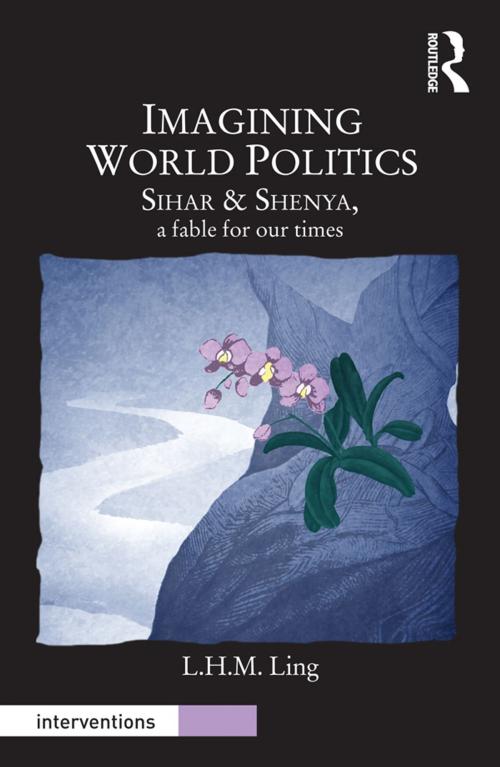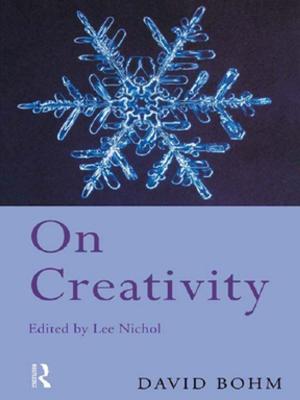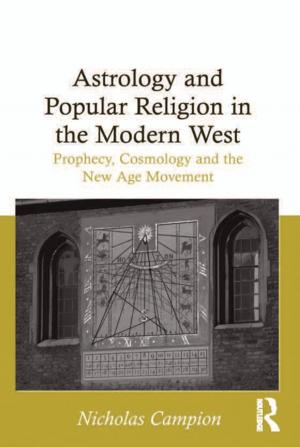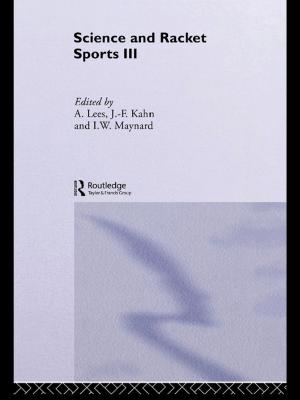Imagining World Politics
Sihar & Shenya, A Fable for Our Times
Nonfiction, Social & Cultural Studies, Political Science, International, International Relations| Author: | L.H.M. Ling | ISBN: | 9781317962373 |
| Publisher: | Taylor and Francis | Publication: | February 3, 2014 |
| Imprint: | Routledge | Language: | English |
| Author: | L.H.M. Ling |
| ISBN: | 9781317962373 |
| Publisher: | Taylor and Francis |
| Publication: | February 3, 2014 |
| Imprint: | Routledge |
| Language: | English |
This book offers a non-Western feminist perspective on world politics and international relations. Creative, innovative, and challenging, it seeks completely to transform contemporary Eurocentric and masculinist IR by re-presenting it in non-Western, non-masculinist, and non-academic terms. Drawing on Daoist dialectics, the stories of Sihar and Shenya aim to redress such hegemonic imbalance by completing the IR story. To the yang of power politics, this book offers a yin of fairy-tale. (Both are equally fantastical but to different purposes.) To the yang of binary categories like Self vs Other, West vs Rest, hypermasculinity vs hyperfemininity, Sihar and Shenya show their yin complementarities and complicities, inside and out, top and bottom, center and periphery. And to the yang of intransigent hegemony, Sihar & Shenya explores the yin of emancipation through porous, water-like thought and behavior through venues like aesthetics and emotions. From this basis, we begin to see another world with another kind of politics.
Written with students of IR and world politics in mind, this book offers a postcolonial bridge for IR/WP. Following an academic introduction to assist the reader, Ling moves away from traditional scholarship and into three interlocking fables:
- Book I shows what an alternative world could look and feel like.
- Book II makes the implications for IR/WP more explicit. It draws on the traditional Chinese notion of the five movements (wu xing) -- fire, metal, earth, wood, and water -- to illustrate iconic elements of IR/WP -- power, wealth, security, love, and knowledge -- and how they could change according to circumstance and context.
- Epilogue/Introduction: The Return brings the reader back into the Western world and focuses on modern-day PhD student Wanda who is troubled by what she is learning, and searches for a different perspective.
Engaging with the substantive problematiques at the heart of international relations studies, this work is a unique and innovative resource for all students and scholars of international relations and world politics.
This book offers a non-Western feminist perspective on world politics and international relations. Creative, innovative, and challenging, it seeks completely to transform contemporary Eurocentric and masculinist IR by re-presenting it in non-Western, non-masculinist, and non-academic terms. Drawing on Daoist dialectics, the stories of Sihar and Shenya aim to redress such hegemonic imbalance by completing the IR story. To the yang of power politics, this book offers a yin of fairy-tale. (Both are equally fantastical but to different purposes.) To the yang of binary categories like Self vs Other, West vs Rest, hypermasculinity vs hyperfemininity, Sihar and Shenya show their yin complementarities and complicities, inside and out, top and bottom, center and periphery. And to the yang of intransigent hegemony, Sihar & Shenya explores the yin of emancipation through porous, water-like thought and behavior through venues like aesthetics and emotions. From this basis, we begin to see another world with another kind of politics.
Written with students of IR and world politics in mind, this book offers a postcolonial bridge for IR/WP. Following an academic introduction to assist the reader, Ling moves away from traditional scholarship and into three interlocking fables:
- Book I shows what an alternative world could look and feel like.
- Book II makes the implications for IR/WP more explicit. It draws on the traditional Chinese notion of the five movements (wu xing) -- fire, metal, earth, wood, and water -- to illustrate iconic elements of IR/WP -- power, wealth, security, love, and knowledge -- and how they could change according to circumstance and context.
- Epilogue/Introduction: The Return brings the reader back into the Western world and focuses on modern-day PhD student Wanda who is troubled by what she is learning, and searches for a different perspective.
Engaging with the substantive problematiques at the heart of international relations studies, this work is a unique and innovative resource for all students and scholars of international relations and world politics.















